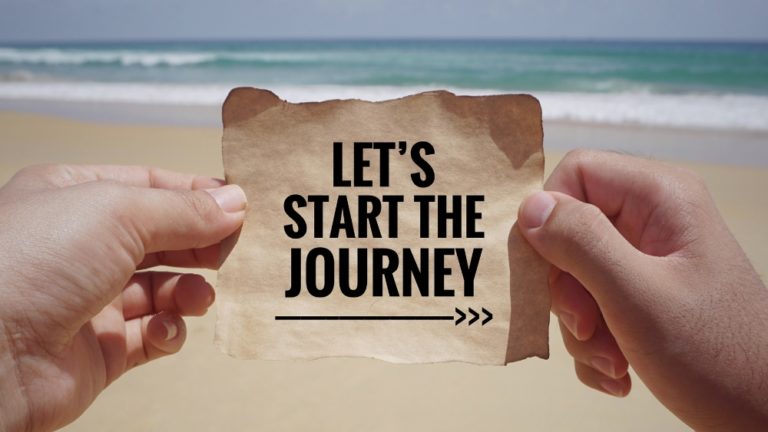Mastering Active Listening Vs Reflective Listening
Hello, fellow self-improvement enthusiasts! Welcome to yet another journey of introspection, with a humorous dash of self-deprecation thrown in for good measure. Ever found yourself sitting in a conversation, head bobbing like an overexcited pigeon to someone’s endless narration, only to realize that not a morsel of it has actually seeped into your brain?
Worse yet, ever busted out your sauciest anecdotes and metaphors only to be met with glazed-over eyes and slack jaws? Chances are, you may have been a victim of poor listening, or as I like to playfully call it – ‘in one ear, out the other’ syndrome. Fear not! We’re about to embark on a deep dive into the different categories of listening: Active Listening Vs Reflective Listening, a tantalizing duo that has the potential to transform your communication skills swiftly.
Understanding Active Listening
Now, let’s wiggle those auditory muscles and kick off with the first ringmaster of our conversation circus – active listening. Active listening sits pretty high up on the pedestal of communication methods, and it’s about to become clear why.
Definition of Active Listening
Active listening, or as I like to call it, the “Lock and Load” of communication methods, is the immersive engagement with what someone else is saying, accompanied by demonstrative cues that let the speaker know they, indeed, have your undivided attention. It is not a passive ingestion of words bur a strategic munching, chewing, and digesting of them.
In simpler terms, active listening becomes the ‘quivering whisker’, all set to catch every nuanced inflection, waiting to process it. A key aspect of active listening is the use of verbal and non-verbal forms of communication – from encouraging nods and understanding smiles to thought-provoking questions that encourage speakers to elaborate further.
Active listening is the immersive engagement with what someone else is saying, accompanied by demonstrative cues that let the speaker know they have your undivided attention.
The Importance of Active Listening
“Why, the devil is in the details, dear reader!” as the popular saying goes. A strong awareness and appreciation of active listening is crucial to elevating your communication prowess. In the artistry of conversation, active listening is the deft stroke of detail that brings the canvas to life.
By actively listening, you are essentially showing empathy and respect for the speaker, letting them know that their ideas and emotions merit value. Moreover, this subtle, yet mighty tool of communication, helps reduce misunderstandings, fosters trust, and strengthens interpersonal bonds. Active listening isn’t just perfunctory ear-attention, it’s a power move!
Examples of Active Listening
Here’s a concrete example to illustrate the magic of active listening. Picture this: you’re sitting in a client meeting. The client is elaborating on a critical project requirement. You nod, maintain eye contact, repeat critical details to confirm understanding, and ask pertinent questions to clarify points you didn’t quite catch.
What have you achieved? You’ve proved your engagement and shown respect for their ideas. You’ve employed active listening to elevate a mundane meeting to trust-enhancing, bond-building exercise. BOOM!
A second instance might be a conversation with a friend who’s been experiencing a tough time. You actively listen to their feelings and, instead of rushing to offer advice, reflect their sentiments back to them, confirming that you understand their plight. Again, it’s active listening, serving you like a trusty old Swiss army knife.
Understanding Reflective Listening
Now that you’ve got a handle on active listening, let’s not rest on our laurels, it’s time to reflect on, well, reflective listening.
Definition of Reflective Listening
Reflective listening is the slightly more sophisticated sibling of active listening. Imagine active listening is homemade bread, warm, simple, comforting. Reflective listening turns this bread into a delectable Bruschetta, with richly flavored toppings of interpretation and reflection.

Primarily, reflective listening involves interpreting the speaker’s emotions and paraphrasing their words to offer a clear understanding and validation of their feelings. It’s the method of repeating, summarizing, and paraphrasing the communication of the talker to confirm comprehension.
The Importance of Reflective Listening
Reflective listening goes beyond the realm of surface-level conversation; it delves deep into the ocean of understanding and empathy. It scoops out the hidden emotions and unvoiced thoughts lurking within the speaker’s expressions. Reflective listening is important as it validates the speaker’s feelings and triggers emotional intelligence, the cornerstone of effective communication.
By practicing reflective listening, you not only understand what the speaker is saying, but also why they’re saying it, capturing the underlying emotions behind their words. Think of reflective listening as the 3D glasses you wear at an IMAX theatre, transforming a flat 2D image into a booming, awe-inspiring cinematic spectacle. Now, who wouldn’t want that level of detail in their conversations?
Reflective listening uncovers hidden emotions and unvoiced thoughts, validating the speaker’s feelings and triggering emotional intelligence for effective communication.
Examples of Reflective Listening
Imagine you’re in the throes of a brainstorming session at work. Your teammate James shares his idea. Instead of merely nodding and taking it at face value, you respond, “So, if I’m understanding correctly, you’re suggesting we redefine our marketing strategy, correct?”. In doing so, you’re exhibiting reflective listening – you’re diving deeper into James’s thoughts. Not only does this make him feel valued, it also creates room for further discussion and eliminates possible misunderstandings.
In another scenario, let’s say your friend Lisa is venting about a stressful situation she faced at a business presentation. Instead of offering solutions right off the bat, you mirror her feelings back to her. Your response might be something like, ‘It sounds like the presentation put you under a lot of pressure. That must have been hard.” This subtle reflection of Lisa’s feelings validates her experience and paves the way for a more open, honest conversation.
Reflective listening can also come into play at home, with family or loved ones. For instance, if your spouse shares a concern about an ongoing issue, your role as a reflective listener would be to echo the sentiment, probe further, or paraphrase the concern to validate their feelings.
Comparing Active and Reflective Listening
As we venture further into the nuances of active listening vs reflective listening, it’s fascinating to observe the interplay between the two. Both are communicative strategies, used as tools to foster productive conversations in various settings, from high-stake business presentations to heart-to-heart talks with someone. The subtle difference in their application makes for an interesting analysis, a journey we’ll embark on now.
Similarities Between Active and Reflective Listening
At the heart of both active and reflective listening, is the ethos of paying full attention and showcasing empathy. Both approaches require the listener to be engaged, open, and responsive. They both stress the importance of pausing before responding, which allows for absorption and understanding, rather than just a rote recitation of a response.

Similarities also lie in the interactional nature of these listening techniques. In both cases, it isn’t just about hearing – it’s about active engagement and genuine response. It involves both verbal and non-verbal cues, including maintaining eye contact, nodding, or verbally acknowledging a point made by the speaker.
Furthermore, both active and reflective listening share a crucial purpose – they aim to foster deeper connections, promote clarity, and spark meaningful dialogue. These techniques help to turn conversations into a shared experience, connecting thoughts and emotions between people.
Differences Between Active and Reflective Listening
Despite their similarities, there is a subtle albeit impactful difference between active and reflective listening. Active listening is a broader concept and mainly revolves around giving the speaker full attention, understanding the information, and providing appropriate responses. It’s about being present, absorbing what is being said, and responding thoughtfully.
On the flip side, reflective listening takes a step further. It involves rephrasing or paraphrasing the speaker’s words or expressing understanding of the speaker’s feelings. It attentively listens to not just the words, but the emotions and thoughts expressed. This technique encourages the speaker to continue speaking, and it reassures that they are being accurately understood.
How to Improve Active and Reflective Listening Skills
Our journey into the realm of ‘active listening vs reflective listening’ takes us now to the question: How can we improve and refine these critical skills? Thankfully, we’re not bereft of strategies. Let’s dive into the actionable steps you can take to cultivate these essential attributes and fortify your interactions.
Tips to Enhance Active Listening
Improving active listening skills is an attainable goal, although it does require conscious effort and practice. 1. Pay full attention: Ensure you’re giving the speaker your undivided attention. Remove any distractions and really focus on what’s being said.
2. Show you’re listening: Use non-verbal cues like nodding or maintaining eye contact to express your engagement. 3. Provide feedback: Offer your understanding of the information verbally, either by summarizing, clarifying, or asking insightful questions.
4. Be patient: Allow the speaker to finish their thoughts without interruption. And finally, 5. Respond thoughtfully: Your responses should be considerate and well-thought-out, rather than immediate reactions.

Tips to Enhance Reflective Listening
Boosting your reflective listening skills, on the other hand, demands a keen understanding of not just the spoken words, but also the emotions underlying them. Here are two essential tips.
1. Reflect feelings: Pay attention to the speaker’s feelings and reflect them back. Statements like ‘It sounds like you were quite thrilled by that achievement’ can indicate you’re tuned into their emotional state.
2. Paraphrase: When you rephrase what the speaker says, it demonstrates your keen interest and deep understanding. Plus, giving them a chance to clarify or correct where necessary reduces misunderstandings.
Boosting your reflective listening skills requires understanding the emotions underlying the spoken words, which can be achieved by reflecting the speaker’s feelings and paraphrasing their statements.
The Impact of Active and Reflective Listening in Communication
We’ve dissected, compared, and scrutinized the facets of ‘active listening vs reflective listening’. Now, it’s time to behold their impact on communication. Measuring the profound influence of these powerful tools is like peeling an onion – each layer revealing another layer of deep significance. Stay with us as we delve deeper into the transformative power of effective listening in the realm of communication.
Role of Active Listening in Effective Communication
In the labyrinth of effective communication, active listening stands as an indispensable instrument. Often underestimated, much like my high school health class, it’s a skill that makes or breaks meaningful conversations. By practicing active listening, you engagedly absorb, understand, and respond to the information being shared, creating a sense of mutual respect and understanding. This, in turn, establishes strong personal and professional relationships, threading the way towards a communicative environment where everyone feels heard and valued.
An apt metaphor for active listening could be a heart-to-heart conversation with your biography or ‘bio’. Just as you wouldn’t dismiss paragraphs in your bio as unimportant, disregarding someone’s verbal expressions could lead to a loss of essential information. Active listening emphasizes detail and thoroughness, making it a vital part of effective communication.
Role of Reflective Listening in Effective Communication
Reflective listening is the Picasso in the world of communication, often uncategorized yet profoundly impactful. It’s like the friend who doesn’t just hear your dilemma but shows empathy and mirrors your feelings back to you for better understanding. Reflective listening is not just about understanding the word, but also about soaking up the emotions and thoughts behind those words – effectively creating a mirror image of the speaker’s sentiments.
The brilliance of reflective listening is in its way of providing feedback that manifests a comprehension of both the content and feelings of the speaker. Like earning a master’s degree in social work, it aids in reading and understanding human emotions, further strengthening their relationship and fostering an atmosphere of empathy and trust. As a result, it team-ups with active listening to weave an effective communication strategy.
FAQs
1. Is reflective listening a part of active listening?
Reflective listening indeed forms a part of active listening. It’s like a subplot to the grand scheme of active listening, only it’s not peripheral but central to the narrative. In active listening, we not only hear but understand and then respond. This understanding part is smoothed by the process of reflective listening, providing a deeper comprehension of the speaker’s message.
2. How can active and reflective listening improve communication?
Active and reflective listening can improve communication by facilitating empathy, understanding and respect. These skills enable a person to not only hear information but also understand it from the speaker’s perspective. This understanding aids in formulating responses that are pertinent and valuable, enhancing the quality of the interaction.

3. What are some common mistakes in active and reflective listening?
Common mistakes in active and reflective listening involve distractions, premature judgments and focusing on formulating a response rather than understanding the speaker’s message. Like missing vital class notes, these mistakes can impede the purpose of active listening – understanding and reflecting upon the information being shared.
4. Can you provide more examples of active and reflective listening?
Indeed, more examples of active and reflective listening include showing interest in the speaker’s words, utilizing positive body language, and providing appropriate verbal reinforcements. A relevant analogy would be treating a conversation like a tennis match, in which the ball (conversation) loops smoothly back and forth, manifesting successful active and reflective listening skills.
Conclusion
The journey to mastering active listening vs reflective listening is akin to stumbling upon a gem in a mine of stones. Exciting, rewarding, and transformative – keeping this duo in your communication skillset is a game-changer.
Their significance lies in how they elevate communication from just an exchange of information to meaningful and thoughtful conversations. Whether it be your high school health class discussions or maneuvering through the complex field of social work after earning your master’s degree, the prowess of active and reflective listening stands uncontended.
Remember, everyone wants to be heard, understood, and valued, and these communication practices provide just the right foundation for that. Active listening vs reflective listening is not a battle to choose one over the other but understanding their inextricable link and importance. Embrace this ignited wisdom from our exploration and tread courageously on the path of ceaseless self-improvement.
Thank you for letting me be a part of your transformative journey. Until next time, keep listening, keep growing. Signing off, Fabian.
Share with your Friends:






